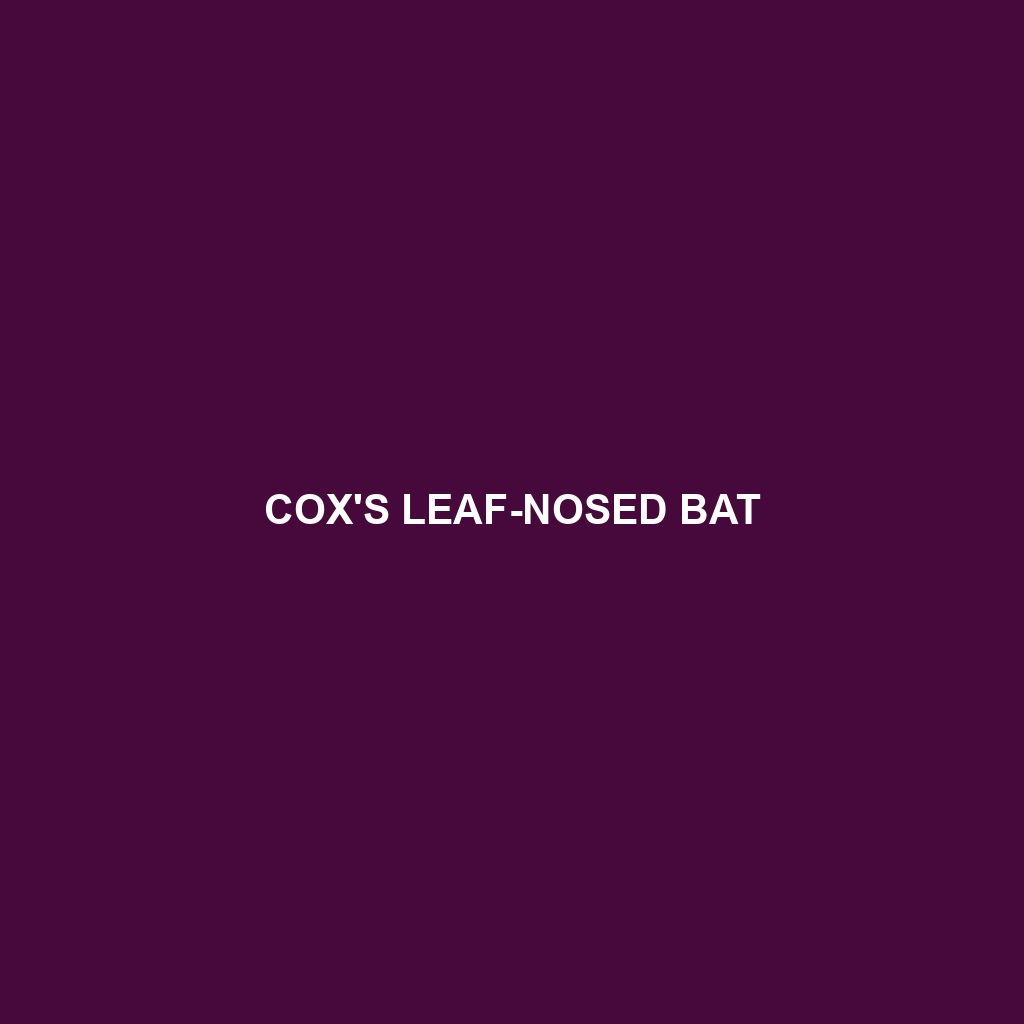Cox’s Leaf-nosed Bat
Common Name: Cox’s Leaf-nosed Bat
Scientific Name: Hipposideros coxi
Habitat: Cox’s Leaf-nosed Bat is primarily found in the tropical and subtropical regions of Southeast Asia. This species predominantly inhabits limestone caves, forested areas, and rugged landscapes, particularly in countries such as Myanmar and Laos. They thrive in environments that provide ample roosting sites and abundant insect prey, making intact forest ecosystems essential for their survival.
Physical Characteristics: Cox’s Leaf-nosed Bat is relatively small, with a wingspan ranging from 25 to 30 centimeters. Its fur is typically dark brown to grayish in color, with a lighter underbelly, making it well-camouflaged within its natural habitat. One of its most distinctive features is the unique leaf-like structure on its nose, which plays a critical role in echolocation, helping the bat navigate and hunt effectively in low-light conditions. Additionally, its large ears further enhance its auditory capabilities, vital for a nocturnal lifestyle.
Behavior: This bat species is primarily nocturnal, emerging at dusk to forage for food. They are known for their agile flying abilities and can cover significant distances in search of insect prey. Socially, Cox’s Leaf-nosed Bats often roost in large colonies, exhibiting behaviors such as grooming and vocal communication. These interactions are crucial for maintaining social bonds within their groups.
Diet: The diet of Cox’s Leaf-nosed Bat consists mainly of moths, beetles, and other nocturnal insects. Their feeding habits heavily rely on echolocation to identify and capture prey, allowing them to hunt efficiently in the dark. This bat plays a vital role in controlling insect populations, contributing to the overall health of its ecosystem.
Reproduction: Cox’s Leaf-nosed Bats typically breed once a year, with mating occurring during the wet season when food is abundant. After a gestation period of approximately 60 days, females give birth to a single offspring, which is nursed until it becomes independent. The young bats gradually develop flying skills and learn foraging techniques from their mothers, ensuring their survival in the wild.
Conservation Status: Currently, Cox’s Leaf-nosed Bat is classified as ‘Vulnerable’ by the IUCN Red List. Habitat destruction, particularly from deforestation and mining activities, poses significant threats to their populations. Conservation efforts are necessary to protect their natural habitats and ensure the longevity of this unique bat species.
Interesting Facts: Cox’s Leaf-nosed Bat is often noted for its unique nose structure, which not only aids in echolocation but also is a distinctive characteristic that sets it apart from other bat species. In some regions, local folklore associates these bats with good fortune, highlighting their cultural significance in addition to their ecological role.
Role in Ecosystem: As a natural predator of insects, Cox’s Leaf-nosed Bat is integral to maintaining the balance of its ecosystem. By controlling insect populations, they help prevent crop damage, thus supporting local agriculture. Furthermore, their guano (bat droppings) contributes to soil fertility, promoting healthy vegetation in their habitats, showcasing their importance in both ecological and agricultural contexts.
